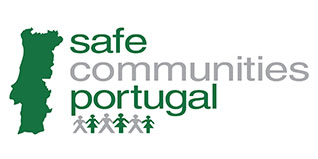New Year’s Eve Traffic Restrictions on Tuesday 31st December Praça do Comércio, Lisbon

PSP is preparing an operation to “ensure that all celebration locations are safe and that everything runs smoothly and without incidents”
Traffic will be restricted from 4pm on Tuesday in Praça do Comércio, in Lisbon, due to the New Year celebrations, with the PSP advising that those taking part in the festivities travel by public transport.
Sub-intendent Manuel Gonçalves, head of the operational area of the Lisbon Metropolitan Command (Cometlis) of the PSP, explained this Monday, in a press conference, that the security guidelines for New Year’s Eve are included in the ongoing operation “Safe Parties”.
According to the person in charge, there will be visible, preventive policing, in order to “ensure that all celebration locations are safe and that everything runs smoothly and without incidents”.
Without disclosing the number of operational staff deployed, Manuel Gonçalves pointed out that in places where various New Year’s Eve parties are expected to take place, some of a public nature, others of a private nature, there will be a “preventive aspect”, taking into account the greater concentration of people.
Manuel Gonçalves listed several festivals in the municipalities of Cascais, “where it has already been announced that thousands of people will be present”, Vila Franca de Xira, Amadora, Sintra, Loures and Oeiras.
In Lisbon, the person in charge explained that the festivities in Parque das Nações and Praça do Comércio will also have the support of the Lisbon Municipal Police (PM), and the Special Police Unit will also be activated.
Rui da Costa Fonte, head of the operational area of the Lisbon Military Police, explained that traffic will be restricted from 4 pm on Tuesday near Praça do Comércio, advising the use of public transport for all those traveling to the area for the festivities.
“That area of the city is very well served by public transport. The metro will run until 3:00 am. Carris [will run] all night and CP – Comboios de Portugal, the same thing”, said the official, pointing to the use of the Cais do Sodré, Rossio and Santa Apolónia stations, “which provide access to Praça do Comércio”.
Iuri Rodrigues, commander of the 1st Police Division of the PSP, responsible for the festivities, said that the area around the festival will close at 5:00 pm – the same happening with the Terreiro do Paço metro station -, with six entry points at Praça do Comércio.
“As in other years, entry is restricted to certain locations, with a summary security search that aims to prevent the entry of objects prohibited by law or considered potentially dangerous, taking into account the large concentration of people,” he said.
Thus, there will be entry points at the intersections of Rua do Arsenal with Rua do Porto Santo, Rua da Conceição with Rua Áurea, Rua Augusta, Rua da Prata and Rua dos Fanqueiros, and Rua da Alfândega with Rua dos Armeiros.
According to the person in charge, “there will be no entry via Ribeira das Naus, nor Infante Dom Henrique, which will be emergency routes”.
Among the objects that are not allowed in the venue, and must be discarded upon entry, are glass bottles or cups, which is why the authorities advise against taking bottles of champagne, as well as umbrellas, helmets, selfie sticks, chairs and “any type of object due to its size that could be blunt”.
Manuel Gonçalves also called on people, “wherever they are, to adopt responsible behaviour and show respect for others”, noting that, in addition to the preventive part, the PSP will pay “special attention” to areas with large crowds. The authorities will also carry out road inspections.
“It’s a festive day, people are happy and effusive, but you have to behave in a way that respects the freedom of others to avoid moments of tension. You have to arrive early. At 9:30 pm there is a concert, then, at midnight, about 10 minutes of fireworks, and then another concert”, said Iuri Rodrigues, appealing to people not to arrive just in time for the fireworks, as they run the risk of not being allowed into the venue.

 People started gathering in prayer today and visiting mass graves in Aceh, one of the worst-hit areas by the Boxing Day Indian Ocean tsunami. Many wept openly at the mass grave in Ulee Lheue village, where more than 14,000 unidentified and unclaimed tsunami victims are buried. It is one of several mass graves in Banda Aceh, the capital of Indonesia’s northernmost province.
People started gathering in prayer today and visiting mass graves in Aceh, one of the worst-hit areas by the Boxing Day Indian Ocean tsunami. Many wept openly at the mass grave in Ulee Lheue village, where more than 14,000 unidentified and unclaimed tsunami victims are buried. It is one of several mass graves in Banda Aceh, the capital of Indonesia’s northernmost province.



 The president of the National Road Safety Authority (ANSR) regretted this Monday that Portugal continues to be “the country in Europe with the most road insecurity” and called on the Government to approve the National Road Safety Strategy this year.
The president of the National Road Safety Authority (ANSR) regretted this Monday that Portugal continues to be “the country in Europe with the most road insecurity” and called on the Government to approve the National Road Safety Strategy this year.